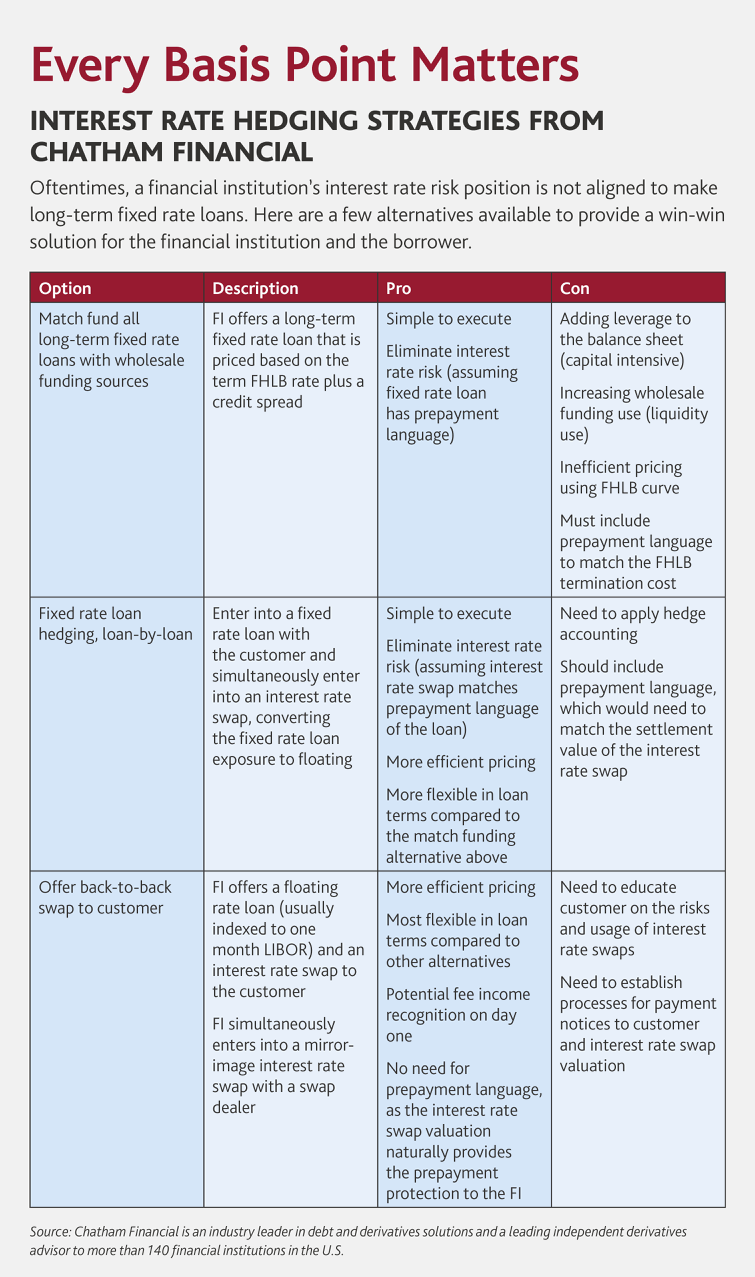By Barry M. Pelagatti
With the Federal Reserve committed to a slow but steady rate hike program in 2017, lenders face a net interest margin (NIM) squeeze that may exacerbate recent years’ long thinning of the margin and increase funding challenges for many middle-market and regional banking institutions.
Though the Fed elected to hold rates steady at its February 2017 meeting, it reconfirmed its intention to institute three rate hikes this year, after having raised rates only twice in the last decade. Any additional demand-side pressure—for example the new administration’s proposed $1 trillion-plus infrastructure spending plan—could potentially drive up inflation and trigger additional rate hikes.
Taken together, these moving pieces are putting banks’ asset liability management (ALM) programs under scrutiny by senior banking executives and regulatory bodies to ensure banks are able to navigate this transition and to adjust to the new environment with minimal impact on profitability.
At the heart of the issue for banks is the potential for an asset liability mismatch to emerge that could force them to take deliberate steps to protect margins.
This is likely to disproportionately impact banks outside of the top 50 in the U.S., and those that have assets of between $1 billion and $3 billion, according to research done by the Corporate Division of CenterState Bank.
The origin of this risk is that banks in this segment of the market have slowly been increasing loan durations, and many hold over 50 percent of their loan portfolio in durations that are three years or longer, according to CenterState.
At the same time, non-maturity account deposits have ballooned since the 2008 downturn, leaving banks exposed to short-term interest rate moves. These could be further exacerbated by consumers moving money out of non-maturity accounts or to competing accounts in pursuit of higher yield in a rising rates environment.
By contrast, the top 50 banks have allocated more than half of their loan portfolio to terms that are less than three months, according to CenterState Bank. This affords them much greater flexibility to pivot and adjust NIM levels as rates steadily rise.
So what can banking institutions that are heavy on longer term loan durations do to prepare for the road ahead?
Running repricing scenarios is something that banks typically do on a quarterly basis but, in the current environment, banks with high risk exposure should consider more frequent and in-depth ALM stress testing.
These tests should address a number of issues, including repricing, maturities, yield curve, basis and optionality risk exposures. Where assets and liabilities are mismatched, the bank is exposed to risks, which are heightened by the dynamics of the current environment.
Banks should consider expanding their use of derivatives to manage financial risk in a shifting rates environment. While there was a large pullback on the use of derivatives after the 2008 downturn, when used responsibly, derivatives are a powerful tool for managing risk exposure.
Senior banking executives and business line leaders should be aware of what appetite their institution, board members, creditors and other key stakeholders have for the use of derivatives strategies to manage financial risk. Any expanded use of interest rate derivatives should trigger a full review and update to firm policies surrounding their use.
Firms looking to expand derivatives usage will need to put programs in place to educate board members and management teams on the institution’s goals in making that move. They will also need to prepare and maintain the appropriate documentation to comply with applicable accounting and regulatory requirements. Finally, banks will need to ensure that the appropriate compliance and accounting policies and procedures are in place as well as implement a system to ensure appropriate levels of internal oversight.
Years of increased competition and slimming NIMs among banks have organically chipped away at profitability, forcing many institutions to pursue revenues by extending their loan durations.
This has set the stage for a challenging 2017. It has also helped ensure issues surrounding ALM will be on the minds of the executive suite on a weekly, if not daily, basis.
While there should be a sense of urgency for banks with a high exposure to interest rate risk, they should be able to manage that risk by taking the appropriate steps now.
Barry M. Pelagatti is an assurance partner and the national practice leader of BDO’s Financial Institutions & Specialty Finance practice. He can be reached at bpelagatti@bdo.com.

This article originally appeared in BDO USA, LLP’s “Financial Institutions” newsletter (Winter 2017). Copyright © 2017 BDO USA, LLP. All rights reserved.www.bdo.com